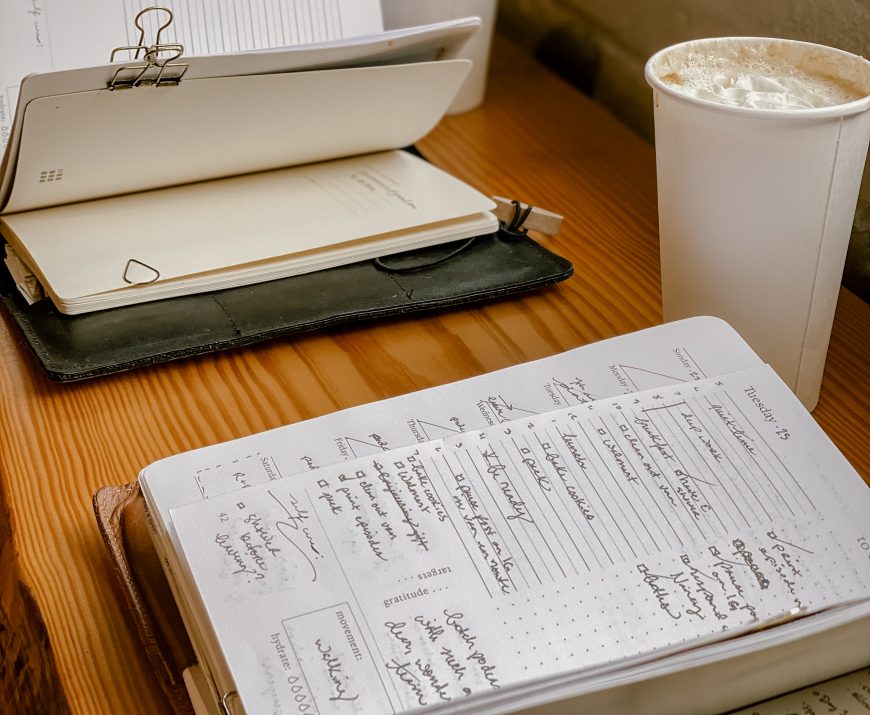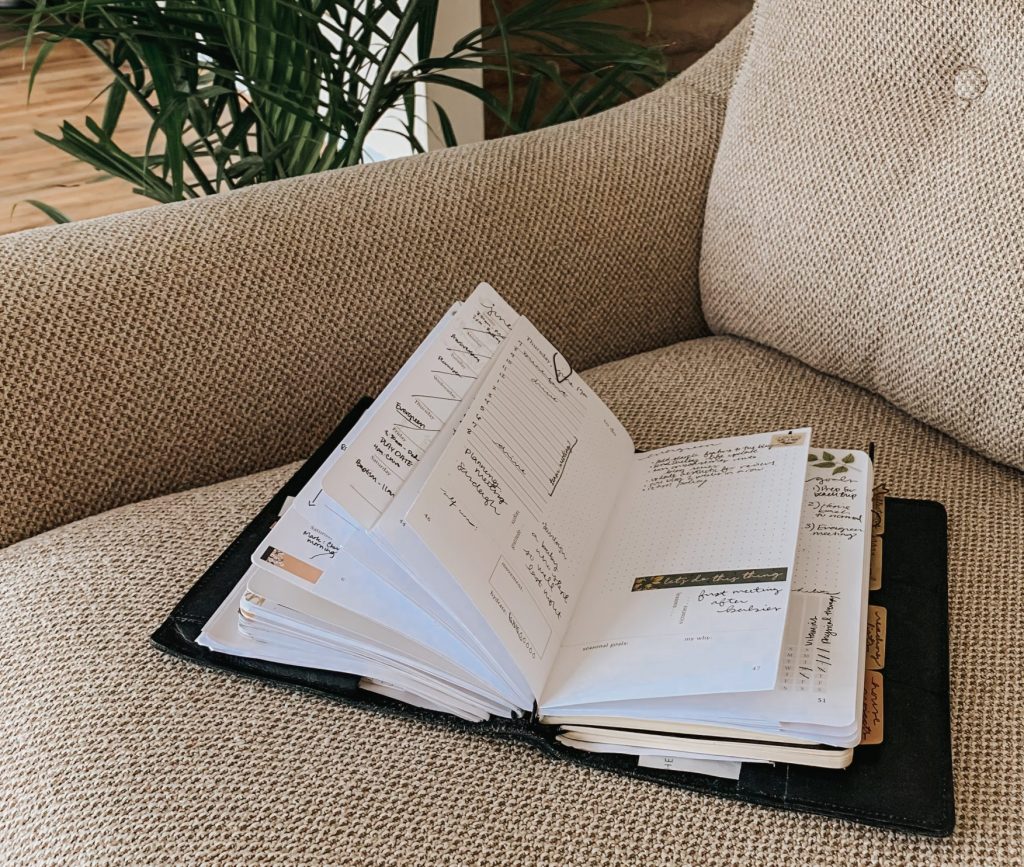Listen to episode 15 on Apple Podcasts, Google Podcasts, or Spotify.
Time-blocking is a powerful productivity tool for maximizing the amount of time you have available, and for liberating your time to focus on what matters most. Yet over the years of talking to women who use our planner (and others who have a heart for intentional living), we’ve found that many of people are intimidated by the concept of time-blocking, don’t know how to make it work for them, or simply feel like it’s just too structured and stiff.
We totally get this! No one wants to feel pressure to make their intuitive daily rhythms “work” on paper before they’re “allowed” to move forward on them. No one wants to feel like there’s no flexibility for spontaneity, or to feel false-guilt when things don’t go “as planned.”
Thankfully, the way we approach time-blocking feels nothing like putting a straight-jacket on your day.
When you time-block, we encourage you to focus on just one thing:
Time-blocking is about getting crazy realistic about the time you have available so that you can successfully prioritize the things that matter most.
When you make space to get realistic about your time, set up habits and rhythms to free up mental bandwidth, thoughtfully organize your tasks, apply prioritization and batching methods, and pad everything with ample margin—both your mental peace and your productivity will increase.
How to Get Started Time-Blocking
1. Begin by writing in the hours you want to focus on. With our Month booklet, the time-blocking feature on the day spread is completely customizable to your unique schedule. You can write in each hour to reflect your ideal rise and sleep schedule, or focus on only your working hours.
2. Write in any inflexible or predictable plans. Things such as commutes, meetings, mealtimes, nap times or appointments. These become your anchors for the day, and you will make your other plans around these predictable times.
3. Review your top three targets, and plan when you will tackle these items. Your top targets are the things you are committing to get done, whether big or small. If you begin planning your day and realize one top target simply can’t be accomplished with the time you have available, now is the time to adjust your targets or other commitments in your day in order to set realistic plans in the time you have.
4. Plan small tasks throughout your day, batching like tasks together. Whether running several errands all in an afternoon, responding to customer inquiries at a set time, or batching cleaning tasks at home; grouping like tasks together can help maximize your time by allowing you to focus on one thing at a time.
Remember that the goal of time-blocking is not to cram your day as full as possible. Instead, the goal is to get realistic about the time you have, so that you can make sure you have space for the most important tasks, and plan out from there to less critical tasks, etc. Time-blocking is a visual way of managing your day—which can both help you plan well, but also give you a self-compassionate perspective when things don’t go as planned.
New to time-blocking?
If you’re brand new to time-blocking, the best thing you can do is begin by penciling in what you did. If you’re familiar with our QuickStart Your Planning method, you will recognize this as the first step. The reason we always come back to this tip is that it is one of the simplest ways to begin crafting rhythms and creating realistic plans that make sense with your real life.
This complete guide walks you the beginner steps of using the timeblocker on your day spread. Download it free below!
__________________________________





Leave a Reply